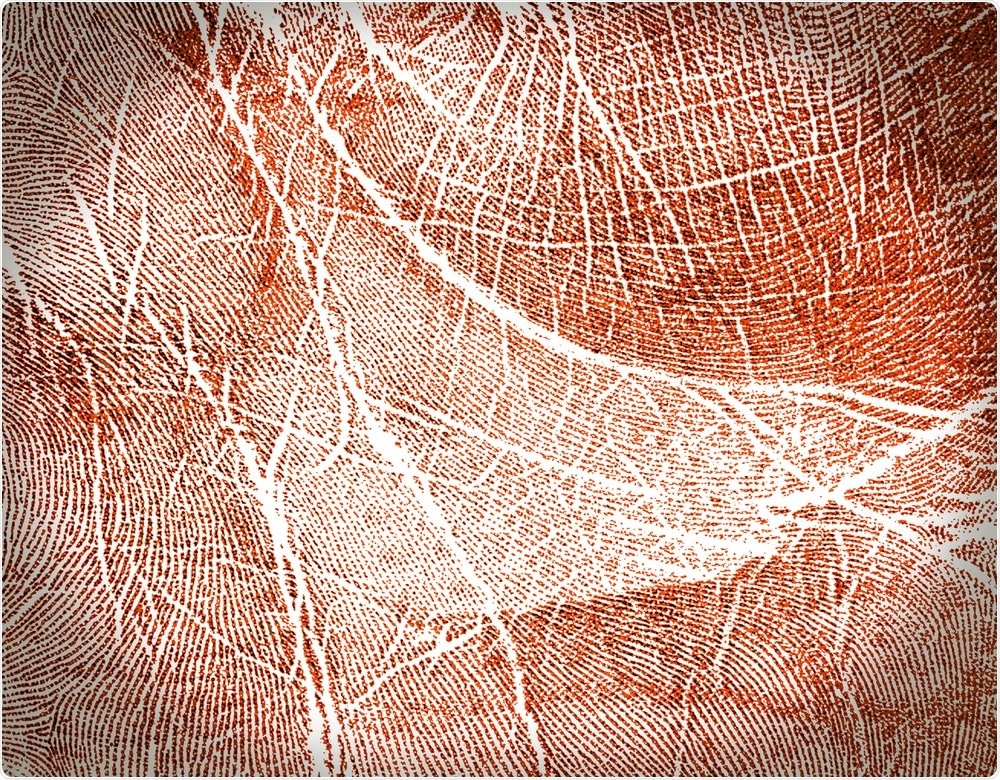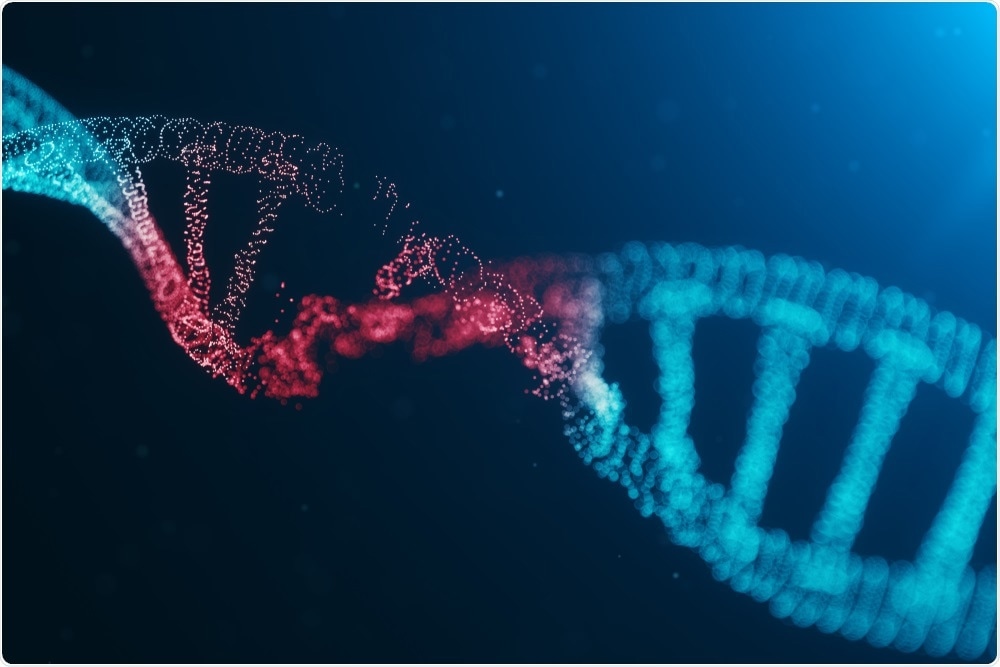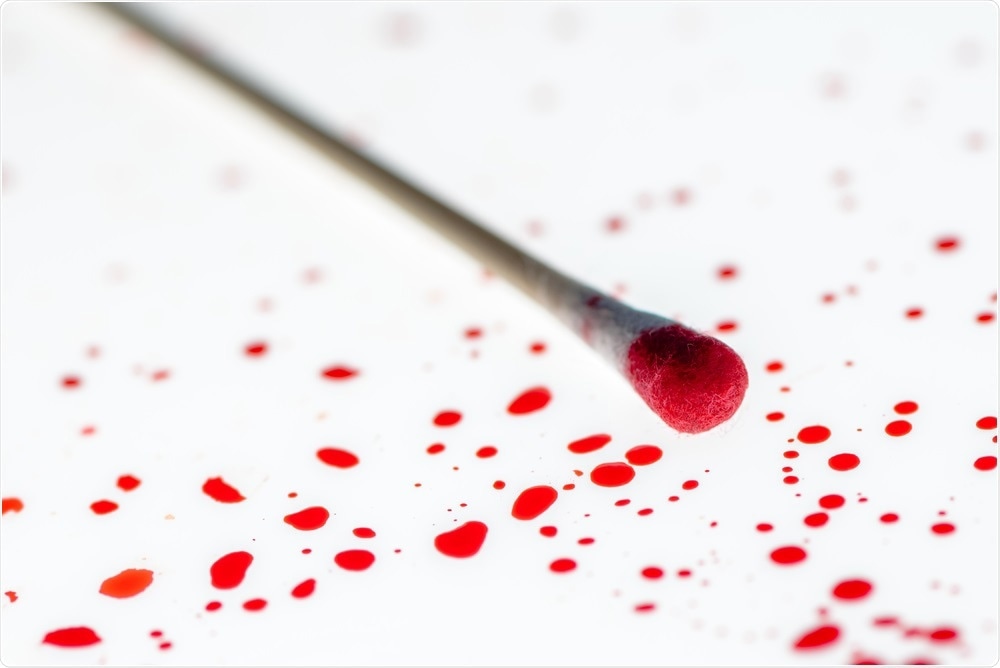Sponsored Content by PittconJul 16 2019
In this interview, Professor Igor K. Lednev discusses the potential of Raman spectroscopy to replace biochemical tests as a universal analytical technique for bodily fluids (biological stains) in forensic science.
How are bodily fluids used by forensic scientists?
Bodily fluid traces are used in modern forensic science for two main reasons. The first is to reconstruct the event. For example, recreating a blood spatter pattern can be useful when determining the nature of the crime. The second and most important use of bodily fluids is for DNA analysis.
Raman Spectroscopy in Forensic Science
As you will know, DNA is one of only two individual types of evidence, fingerprints being the other one. The prosecuting party needs to convince the court about where the DNA came from and to do this, they need to know the source of the fluid that was left at the crime scene. From this viewpoint, bodily fluids are very important in current crime scene investigations.
Which techniques are currently used to analyze bodily fluids left at the scene of the crime?
At the moment, it is mainly biochemical tests that are used to detect and identify body fluids, however, the majority of these tests are presumptive. Confirmatory tests involve the analysis of body fluids in a lab, which is typically time-consuming and labor intensive.
Currently, there is no universal method which can be used for several bodily fluids. Each biochemical test is uniquely suitable for only one bodily fluid. Furthermore, biochemical tests are destructive, and in forensic science, it is very important to preserve evidence for potential further investigations.
Why do you think that a universal method has not yet been developed, and how does the lack of universal techniques impact the power of investigational results?
In my opinion, the lack of a universal forensics test for bodily fluid trace identification is a direct result of the technology not being there yet. Biochemical tests target specific biochemistry, and so they cannot be universal.
That is why we think that Raman spectroscopy could represent a way forward. What makes this possible is a recent technological advancement. Firstly, the development of lasers has been very important. Laser pointers are very stable, reliable and inexpensive now, and we can use these laser pointers as a source for Raman spectroscopy. We are also all using digital cameras now which are very robust, convenient, and relatively inexpensive.
Furthermore, we are using software which gives us real-time analysis of the data. This is extremely important in the field of forensic science because once a crime scene investigator has their evidence, they need to analyze it and get results back as soon as possible.
Statistical software packages have also come a long way recently. Combining this with new technologies opens the door for the development of novel universal analytical methods.
 domnitsky | Shutterstock
domnitsky | Shutterstock
Why do you think that Raman spectroscopy could be a universal method for the forensic analysis of bodily fluids?
Raman spectroscopy, along with other vibrational spectroscopic techniques, has been regarded as the most specific spectroscopic techniques for many years.
The Raman spectroscopic signature of a material is a unique representation of the chemical or biochemical composition of it. This means it can be used for identification purposes. For example, Raman spectroscopy is used not only for various forensic purposes but for medical diagnostics and many other applications where the chemical or biochemical composition of a sample is required to be characterized.
The reason that we believe Raman spectroscopy can be a universal method is that, unlike biochemical tests, it can be applied for the identification of various analytes. It can be used for solid, liquid or gas samples. No sample preparation is required because we are measuring backscattering, and so we can eliminate the biological stain, collect backscattered light, and analyze it. It is also non-destructive – we do not even need to touch the evidence if we are using a portable Raman spectrometer.
What information can be gathered about the sample donor using Raman spectroscopy?
In forensic serology, the first analytical step is to determine the type of bodily fluid you are dealing with, for example, blood, semen, saliva, or sweat. After this has been established, we can do another level of analysis such as determining the time since the fluid (or biological stain) was deposited on the material, which could be important for several reasons: first of all, it may give information about the time of the crime.
Secondly, if there are several sets of biological stains, it may tell us which were deposited at different times so that we can determine which stains are related to the crime. Typically, the most recent event is related to the crime.
The analysis of bloodstains using Raman spectroscopy can also easily tell us whether it is human or animal. This is very important in domestic conditions; when blood is found in the kitchen, for example. Another example of this is in hit and run cases, where it is important to determine whether blood stains, say on a car bumper, came from a human or animal source.
Most recently, we started working on what we call phenotype profiling, wherein we determine race, sex, and age group of the donor from biological stains. This is essential within a crime scene investigation.
Our ultimate goal is to develop a portable instrument in which crime scene investigators can use at a crime scene. This way, upon discovery of biological stains at a crime scene, they would immediately be able to determine characteristics of a donor, such as their sex, race, and age group.
This information is particularly important at the very beginning of the investigation. However, later on, it may also be used to restore the event which occurred. For example, if there are biological stains which belong to different donors, the crime scene investigator may be able to get some idea about how many people were there, and their sex and race.
 Rost9 | Shutterstock
Rost9 | Shutterstock
Can Raman spectroscopy be used to analyze samples that are older than a year, and how much can a sample deteriorate before it becomes unusable?
This is a very important question in forensic science. Bloodstains which have been kept under normal indoor conditions at room temperature, a normal humidity, and not in direct sunlight could keep their composition and be identified as blood for up to two years or even longer.
We have already built a regression model which allows us to determine the time since deposition for bloodstains which are kept for about two years. Blood changes its biochemical composition significantly during this period of time, and we use these changes in order to determine the time since deposition.
If we change the conditions, for example, adding high humidity or direct sunlight, then blood deteriorates much faster. Under humid conditions, blood changes significantly even after a month or so. In answer to your question, the deterioration of a biological stain will depend on the environment.
What are the main advantages of Raman spectroscopy in comparison to other techniques that are currently used in forensics?
The first advantage is that it is highly specific and selective. For example, we once received blood samples from 12 different animals, and my students could differentiate between each one with very high confidence. This is based on ten milligrams of dry blood, which we can characterize without destructing it.
Raman spectroscopy is also less labor intensive, as we do not need to prepare our sample and we are just measuring backscattered light. It can be conducted at the crime scene using a portable Raman instrument, and it can be fully automatic.
We are currently working on developing automatic software to treat our data. We envision that in the future a crime scene investigator will not need to be an expert in Raman spectroscopy. The investigator will need some training to be sure that all measurements are done correctly. Determination of what kind of biological stain it is, phenotype profiling based on it, and even error rate or confidence interval will be determined by a software package.
Are there any challenges associated with Raman spectroscopy that you think may limit its use in forensic science? How can we overcome these limitations?
There are a couple of limitations which I think we will overcome within the next year-or-two. The first issue is substrate interference, which occurs when we have dry traces of body fluids on common substrates. Substrates contribute significantly to a Raman signal, and so we need to find a way to eliminate this interference and focus solely on the right traces of bodily fluids.
We have an idea of how we can overcome this problem. In fact, we have just published an article in the Journal of Raman Spectroscopy, where we have shown the proof of concept for our new approach, based on what is called hyper spectroscopy, in order to identify bodily fluids on common substrates.
Another limitation which we should be able to overcome relatively easily is how donors with diseases which affect the biochemical composition of bodily fluids influence outcomes. For example, we recently published a paper in which we showed that Raman spectroscopy can identify semen even for donors with azoospermia, a disease where the semen of these donors does not contain sperm.
The main biochemical techniques which are currently used for semen identification are based on the detection of sperm. From this viewpoint, Raman spectroscopy is the better method, because we can work with donors with this disease.
As you can imagine, there are many other diseases which can affect the biochemical composition of blood. Overcoming these is one of the objectives in the current grant, which is supported by the National Institute of Justice. We are checking our methodology with regard to different diseases.
 igorstevanovic | Shutterstock
igorstevanovic | Shutterstock
There is one limitation which will be difficult to overcome: how we can find biological stains on large areas of some substrates, for example on a carpet or a wall. Raman spectroscopy, or Raman microscopy, in particular, which we use to map our samples, is a relatively slow technique. We can examine small areas very quickly, but we cannot examine large areas quickly.
This is where we probably need another technique, for example, detectives are now using ultraviolet light to find biological stains on a crime scene. If we combine these two methods, then Raman spectroscopy can do well to characterize the spots which have already been found using other techniques.
Other than that, I do not see any limitations. In fact, we are already talking to some instrument manufacturers in order to test and validate our technology and develop a package where an instrument would come with specific software, ready to go to a crime laboratory.
What does the future look like for the analysis of bodily fluids? Do you think that universal methodologies will be enforced, and if so, do you think that Raman spectroscopy will be one of these methods?
I am pretty sure that the future is bright for Raman spectroscopy and the analysis of biological stains and bodily fluids. In fact, this technique can be used for many other applications in forensic science.
At the moment, Raman spectroscopy is already used by the police for the confirmatory identification of large quantities of drugs. It is beneficial in this area because you do not need to open things like plastic containers to determine what is inside.
There is actually a very specific type of Raman spectroscopy used for this, called spatially offset Raman spectroscopy. This allows measurement of Raman spectrum from inside non-transparent containers, even from materials such as metallic cans.
Instruments based on this technique are already used in Europe in more than 100 airports in order to check liquids in non-transparent containers. For example, this allows mothers to take milk through security. It only takes six seconds to determine what is inside the bottle. I think this is the future, and that soon we will not have the limitation of not being able to bring liquids on to planes.
Raman spectroscopy is also used now for the characterization of fibers and question documents, for which both ink and paper can be identified.
How have you found Pittcon 2019? Why did you feel it was important to share your research at this conference?
There are many reasons why Pittcon is my favorite conference. I always come here, and I try to bring students too. Students love it because they have plenty to learn. I think there is a good future for conferences like this.
In my opinion, Pittcon is the most useful and productive conference for several reasons. Attendees include a significant number of people from many different fields representing academia and industry. These people come together to discuss their novel technologies, learn about new developments in other fields, exchange information and establish new collaborations. All of these are extremely important for technological advancement.
Secondly, the Pittcon Expo is a very large exhibition where companies show their latest products. Within half a day, you can talk to a dozen or so companies about instruments of your potential interest and get all the information you need. Some companies even have instruments which are actually running, and you can bring samples for testing.
Where can readers find more information?
- S.R. Khandasammy, M.A. Fikiet, E. Mistek, Y. Ahmed, L. Halámková, J. Bueno. I.K. Lednev. Bloodstains, Paintings, and Drugs: Raman Spectroscopy Applications in Forensic Science. Forensic Chemistry. 2018, 8, 111-133. https://doi.org/10.1016/j.forc.2018.02.002
- E. Mistek, M.A. Fikiet, S.R. Khandasammy, I.K. Lednev. “Toward Locard's exchange principle: Recent developments in forensic trace evidence analysis.” Analyt Chem. 2019, 91: 637-654.
- A complete list of Lednev’s publications can be found at https://sites.google.com/site/lednevlab/
About Professor Igor K. Lednev
 Igor K. Lednev is a Professor at the University at Albany, State University of New York. He received his Ph.D. from the Moscow Institute of Physics and Technology, Russian Federation.
Igor K. Lednev is a Professor at the University at Albany, State University of New York. He received his Ph.D. from the Moscow Institute of Physics and Technology, Russian Federation.
As an academic visitor, he worked in several leading laboratories around the world including UK, Japan and Germany. In 1997, Dr. Lednev came to the US and joined Sanford Asher’s laboratory at the University of Pittsburgh. Dr. Lednev accepted a faculty position at the University at Albany in 2002.
Prof. Lednev’s research is focused on the development and application of novel laser spectroscopy for medical diagnostics and forensic purposes. To name a few accomplishments, he developed a new approach for the noninvasive, early diagnostics of neurodegenerative diseases (Alzheimer’s, Parkinson’s, etc.) and novel methods for the detection and characterization of biological stains, gunshot residue, hair and other trace evidence recovered at a crime scene.
The fundamental research is focused on understanding the structure and formation mechanism of amyloid fibrils, protein aggregates related to neurodegenerative diseases. A new type of protein folding-aggregation phenomenon, spontaneous refolding of amyloid fibrils, and a new type of a reversible purple protein chromophore were discovered.
Dr. Lednev co-authored over 220 publications in peer-reviewed journals and four US patents.
Dr. Lednev served as an advisory member for the White House Subcommittee on Forensic Science and on editorial boards of four scientific journals including the Journal of Raman Spectroscopy and Forensic Chemistry journal. Dr. Lednev is a fellow of the Society for Applied Spectroscopy and the Royal Society of Chemistry.
He served as a Guest Professor at the Friedrich-Schiller-University, Germany. Dr. Lednev is a recipient of the Society for Applied Spectroscopy Gold Medal Award, the Research Innovation Award from Research Corporation and the Chancellor’s Award for Excellence in Scholarship and Creative Activities.
About Pittcon
 Pittcon® is a registered trademark of The Pittsburgh Conference on Analytical Chemistry and Applied Spectroscopy, a Pennsylvania non-profit organization. Co-sponsored by the Spectroscopy Society of Pittsburgh and the Society for Analytical Chemists of Pittsburgh, Pittcon is the premier annual conference and exposition on laboratory science.
Pittcon® is a registered trademark of The Pittsburgh Conference on Analytical Chemistry and Applied Spectroscopy, a Pennsylvania non-profit organization. Co-sponsored by the Spectroscopy Society of Pittsburgh and the Society for Analytical Chemists of Pittsburgh, Pittcon is the premier annual conference and exposition on laboratory science.
Proceeds from Pittcon fund science education and outreach at all levels, kindergarten through adult. Pittcon donates more than a million dollars a year to provide financial and administrative support for various science outreach activities including science equipment grants, research grants, scholarships and internships for students, awards to teachers and professors, and grants to public science centers, libraries and museums.
Visit pittcon.org for more information.